This is the history of the village of Dixville, a place set within a valley having a lush green background.
Dixville Municipality is a young municipality resulting from the merger in 1995 of the Municipalities of St. Mathieu de Dixville and the Village of Dixville. However, the founding of the two municipalities have a much older history.
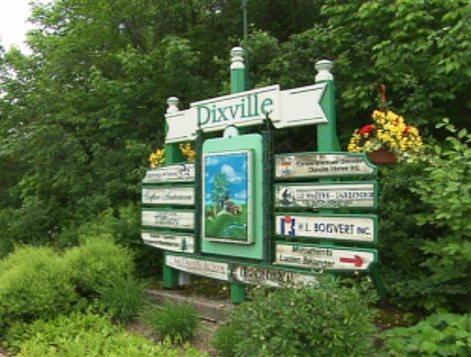
The settlement of Dixville began around the year 1830. This site was then part of the Township of Barford. A Mr. Drew set up a dwelling on the banks of the Coaticook River, cleared land to build a sawmill beside a dam which he had built. This dam was built to take advantage of the water power from the existing power of the river. John Wright came to join up with Mr. Drew in 1836. Soon after, others came to this place and the village became known as Drew's Mills.
In 1840, Dr. W. Ward, a retired physician from the British army, built a home three miles from Drew's Mills and near the American border. Considering that supply routes were practically non-existent, he undertook to build a road toward Hereford, a place which was more developed at this time.
The ease at which wood for construction was available at the sawmill contributed to the settlement of pioneers who cleared the land and promoted the growth of the existing community. This development led to the construction of a flour mill and a general store. There was a population of about one hundred persons at the beginning of the 1850's.
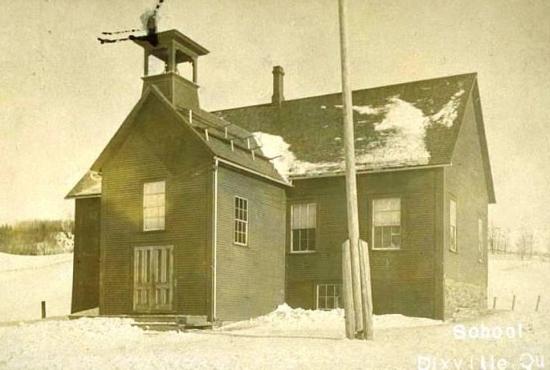
School at Dixville
The construction of the Grand Trunk Railway between Sherbrooke and Island Pond, Vt., also contributed to the growth of this municipality.
The establishment in 1852 of a command post in Drew's Mills brought in engineers and workmen. This resulted in buildings constructed either in a rental context or houses to buy to accommodate these new workers.
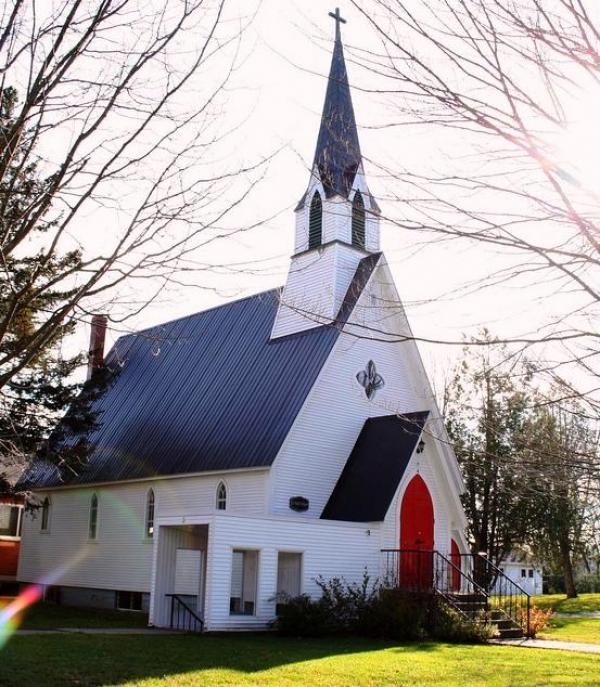
St-Paul
Richard Baldwin, jr. had a contract with the railroad company. He saw to it that a butcher shop was built and maintained by two permanent employees.
The Village of Coaticook, larger than Drew's Mills, became an important supply center for the region. It was at this time that a passable road was constructed to connect the two communities.
Also, at this time, more settlers arrived in Drew's Mills. They cleared the land and took up the raising of cattle and pigs to feed the railway workers.
Once the railway tracks were completed, a station was built a short distance from Drew's Mills. The economy was good and so the people of the community thought about the process of legally becoming a municipality.
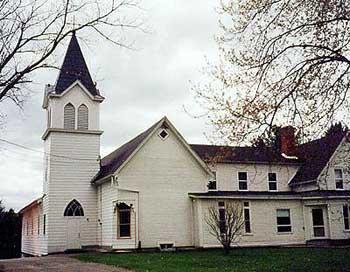
Catholic Church of Dixville
Drew's Mills, by a governmental order, broke away from the Township of Barford in 1874 and was incorporated. Dixville became the official name of the village. The name ''Dick'' was given to Richard Baldwin, jr. and the people in the village referred to him as ''Uncle Dick''. The first mayor of the village was Ozro Baldwin who held the term from 1874 to 1878. The minutes of the municipal meetings were written in English until 1948. Let us note an oddity at this time. The Secretary Treasurer in 1947 and 1948 was Joseph A. Demers, a francophone. From the period 1959 to 1968, the municipal meetings were written in French. The Secretary Treasurer was Wilfrid Lepitre, who was an Anglophone.
The Municipality of St. Matthew de Dixville was incorporated at a much later date, in 1926.
Three Protestant churches were built over the course of time. The Anglican was the first church built, around 1845. The second church to be built was the Baptist Church, in 1854. The last Protestant church, the Adventist Church was built around 1860. The Roman Catholic Church was built in 1915 and the first mass was celebrated in the following year, 1916. The first priest who served this church was Oscar Henry Deserve who was the priest from 1916 to 1918. The Catholic Church in Stanhope was built in 1914.

Baptist Church of Dixville
Drew's Mills was once inhabited by the ''Indians'' according to the old residents. Several farmers found evidence of their passage through the area or of their encampments. They found arrow tips and parts of bows, etc., etc.
It is now time to mention the presence in Dixville of the Dixville Home Center. The Center began in 1958, following the arrival of two Dutch men, Mr. Vandermark and Mr. Visser, who came to settle in Quebec, at Dixville, with the idea of setting up a center for persons experiencing mental difficulties. The two founders met in Holland while studying at a psychiatric facility. They immigrated to Quebec, as many other Dutch people had done, and wanted to continue in the same line of work in which they had previously studied. They first worked in Austin, a place near Magog, with a lady who kept intellectually impaired persons in her home. The two men decided to take this concept a step further and establish a place for people like this. Initially they bought a home in Dixville with help from Reverend Parker. Parker Hill was named in honor of this man. The two founders had the idea of building houses for these people who needed help. These people were often abandoned by their families. These people could come from New England, Ontario or even from Quebec and were mainly Anglophone.
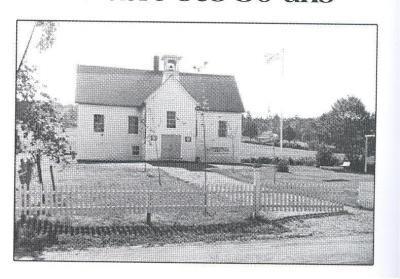
House of Dixville Home
Houses were built over the years in accordance with the growth of the Center. The houses all have a common characteristic. They all have green shutters. The architecture and the green shutters allowed one to identify readily the building of the Dixville Home.
This organization was able to benefit from the many donations. Certain donations of land allowed for the expansion of the Center. A small farm area was also included at the Center where one would find chickens, geese, a lama and several other animals. The residents of Dixville Home took care of these animals and poultry and benefitted from the contact. There also was a small sugarhouse and a tree plantation with a good trail running through it. Many residents went for walks here. All these different factors provided much contentment and enjoyment for the residents. A community garden and a potato field were also part of the Dixville Home property. All the work was carried out, in part, by the residents who seemed to derive a noticeable satisfaction from the chores. A great way to maintain good health and happiness for the residents. Some of the residents would even go to work for people of the village doing odd jobs which they were qualified to do. Workshops such as Ginette Roy, trained certain residents to work in some factories in Coaticook which allowed the resident to take pride in himself and his work.
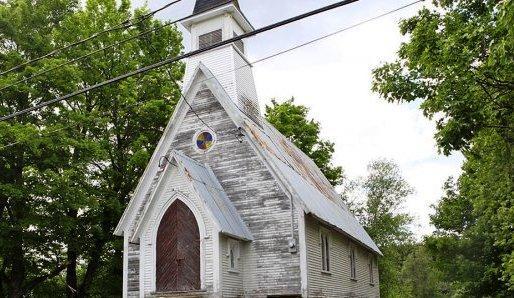
Anglican Church St-Cuthbert
The residents were well known to the people in the village and were truly a part of the village. The ''Hello's'' warm smiles and pleasant conversation exchanged with the village people eventually led to include the residents as equal members in the heart of the village. In 2001, there were 105 residents who participated in the economic life of the village.
The Center began encountering more and more financial difficulties by 1974. The cost of maintaining the administration came through donations and these donations were becoming increasingly scarce. The government decided, at this time, to take over the Center as it was within its jurisdiction to do so.
We are aware that the concept of the Dixville Home was truly unique. There were no fewer than 18 buildings and the residents formed a good part of the village population. The care given to the residents living here was of high quality. They received appropriate care as well as a well defined social life. The people of the village were always open to having these residents live here alongside their own families. All have something to be proud of. Within the property considerations, the Center has given the chance to the municipality to own an inground heated swimming pool as well as a chapel.
Slowly but surely the Center decreased in growth and the municipal council stepped In to see what could be done to save the empty buildings and to maintain some sort of vitality in the heart of the village. At this time it was decided to sell the buildings to buyers willing to renovate and move in. In 2014, all of the Dixville buildings were sold. One of these buildings was bought by the municipality and transformed into a general store. This place will allow the local people to benefit from the history of the Cenre d'Accueil de Dixville. TheCentre remains the owner of a building used as a workshop. There are still residents of the Centre living here and life, even though different, continues at The Centre d'Accueil de Dixville. The municipality also has thirty-four acres of land which it plans to turn into an environmentally-friendly development in the spring of 2017.
Dixville is a village full of history. From the beginning many experiences have happened along the journey. Today Dixville is known for the great quality of life.
A Presentation by: Francoise Bouchard, Secretary, Dixville Municipality and, Martin Saindon, Mayor, Dixville Municipality



